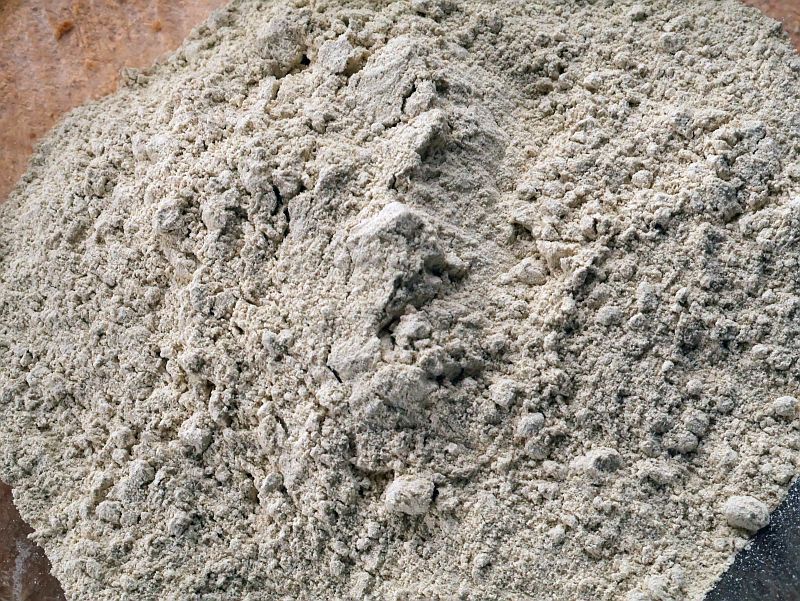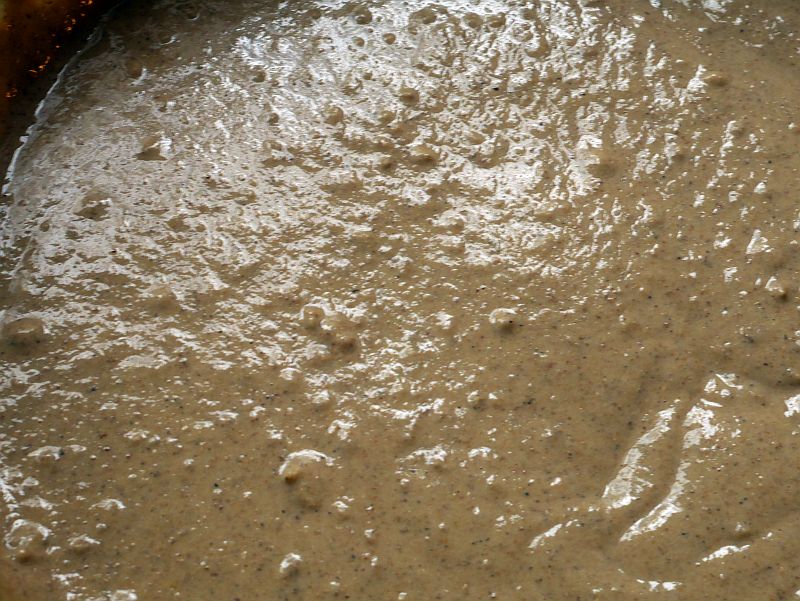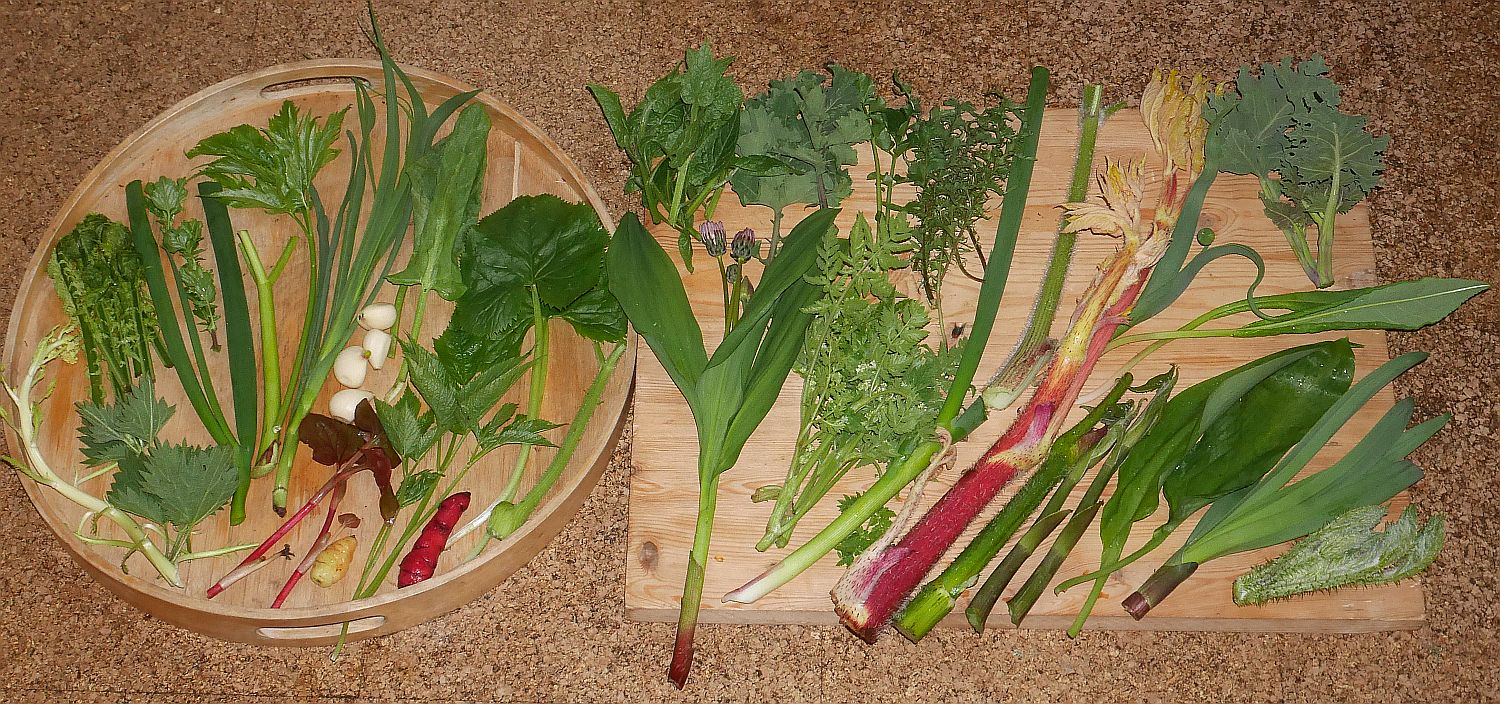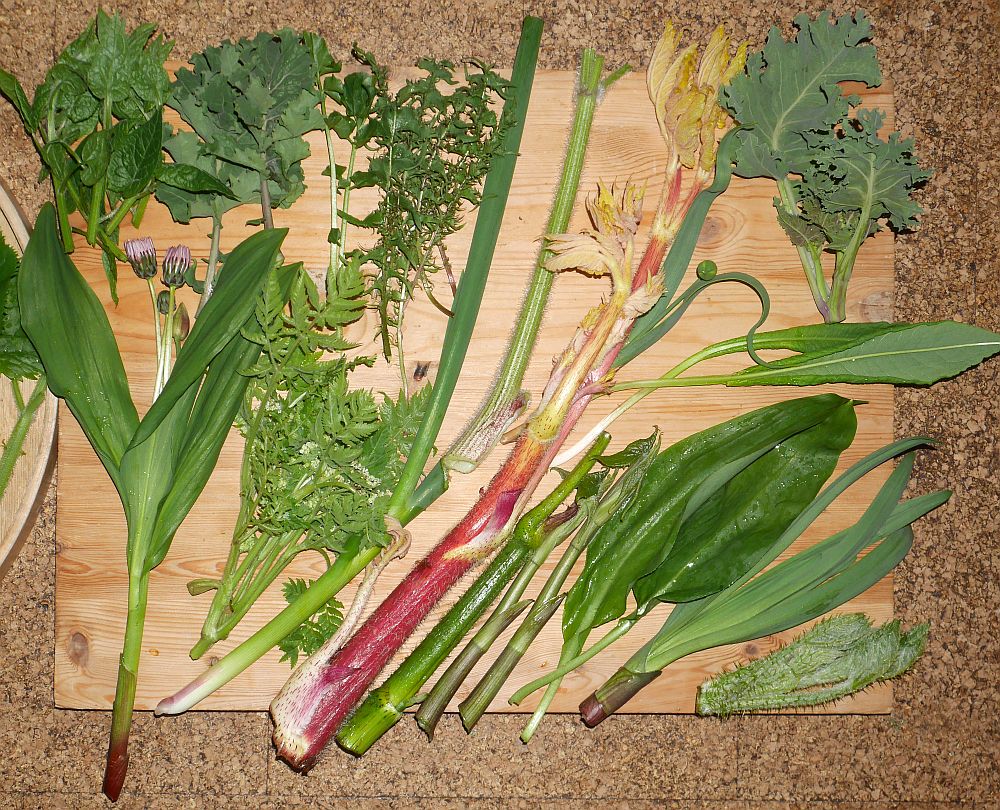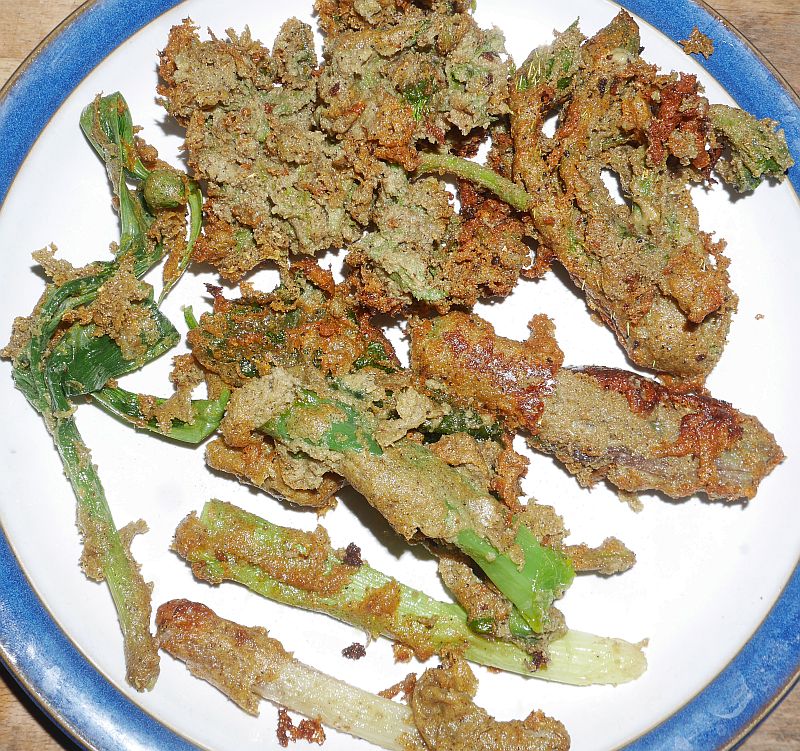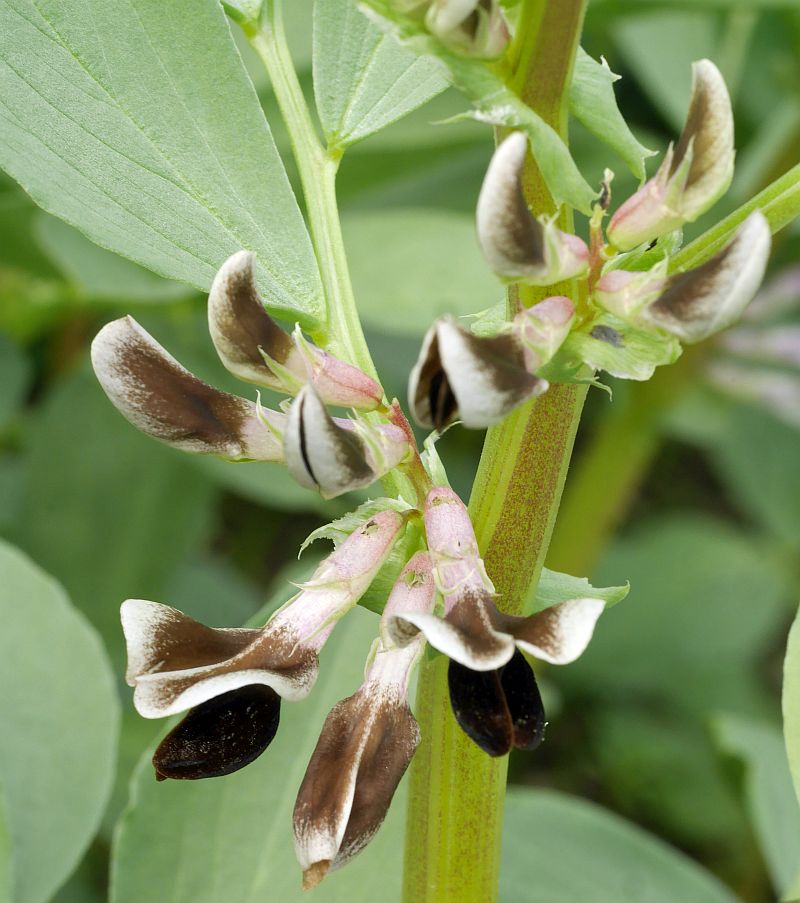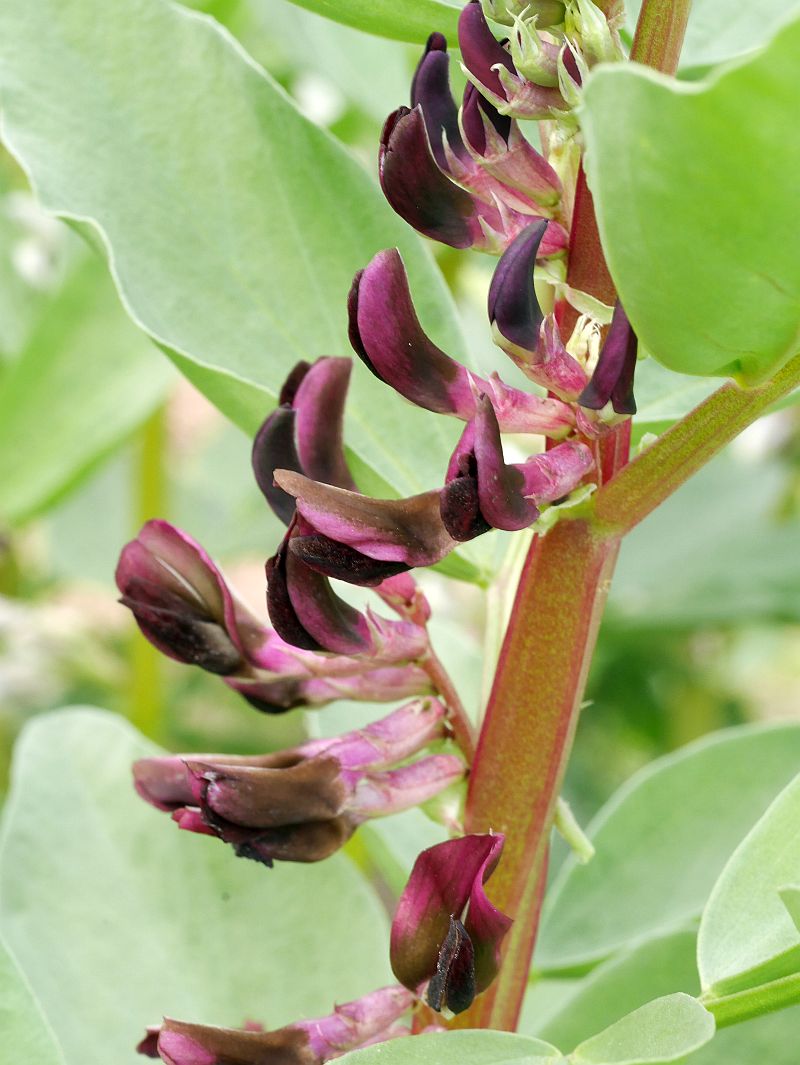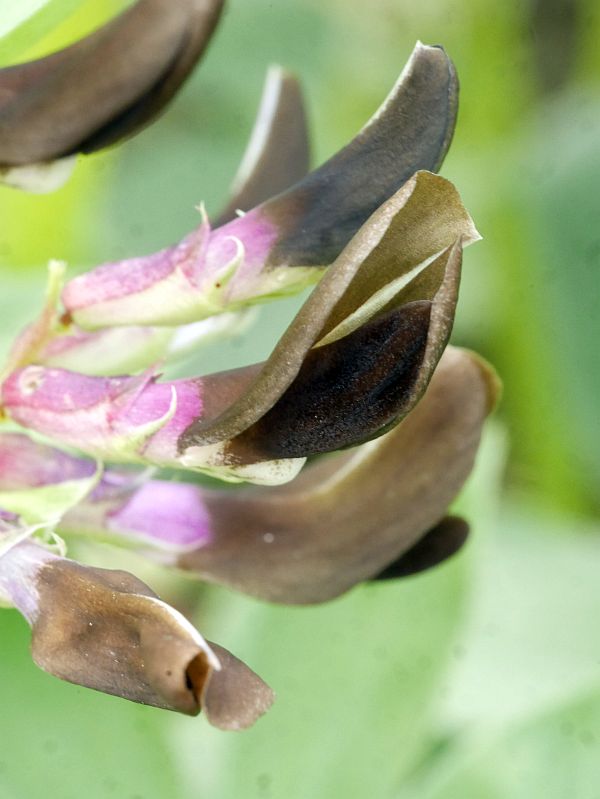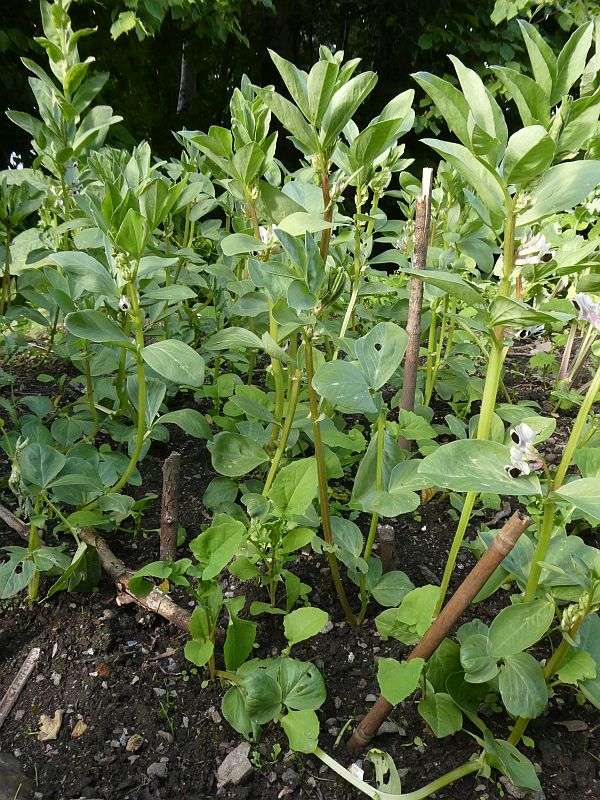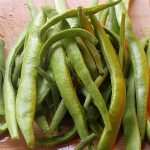I sowed broad (fava) bean / bondebønner (Vicia faba) seed indoors yesterday as there’s still snow where I’d planned to put them outside. In addition to my late broad bean grex with a mix of colours, I thought it would also be worthwhile to start developing a local early variety which could also potentially be useful in more marginal areas such as North Norway and mountain areas. I’m starting with 4 early varieties, two from IPK Gatersleben: 1) Expresse Zeer Vroege Witkiem (meaning “very early white germ (seed)” (FAB424), Express (FAB 7066), my own selection of the commercial variety Express which I’ve grown as my early sort for some years and another purportedly early variety De Monica from Chiltern Seeds. I’ll select mainly for earliness and seed size.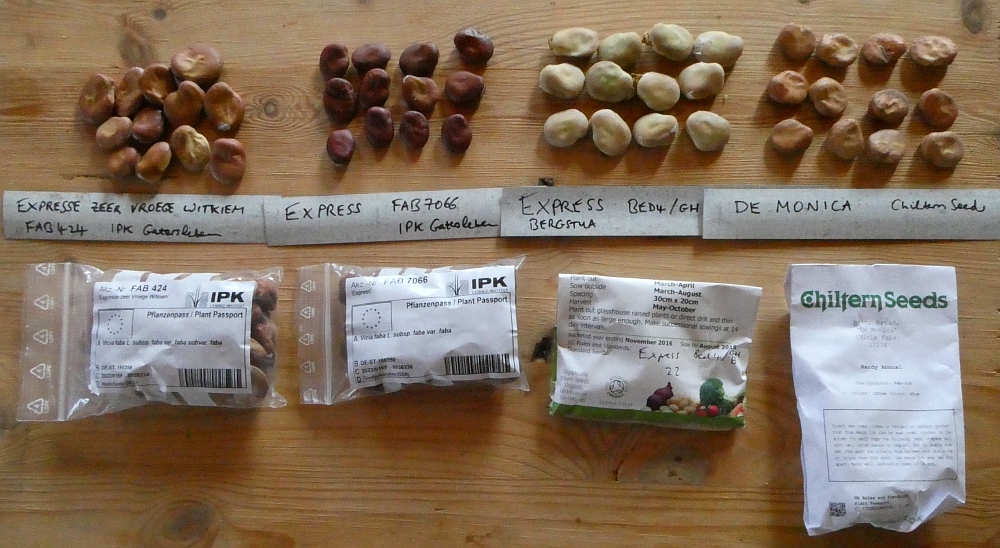
Category Archives: Beans
Red Cheeks and Fingerprints
I harvested two of the more beautiful broad (fava) beans I’ve grown yesterday, both of which originate in Canada. Red Cheek and Fingerprint favas. The diversity of forms, colours and sizes in these beans doesn’t cease to amaze me! I will definitely be trying to maintain these forms within my grex of broad beans (selection for a wide diversity of different forms every year and all planted close together so that they will cross promiscuously)!
Read legendary Will Bonsall’s article on fava beans where he talks about the diversity of forms and his collection of 250 varieties he maintains for Seed Savers Exchange: https://www.mofga.org/resources/beans/favas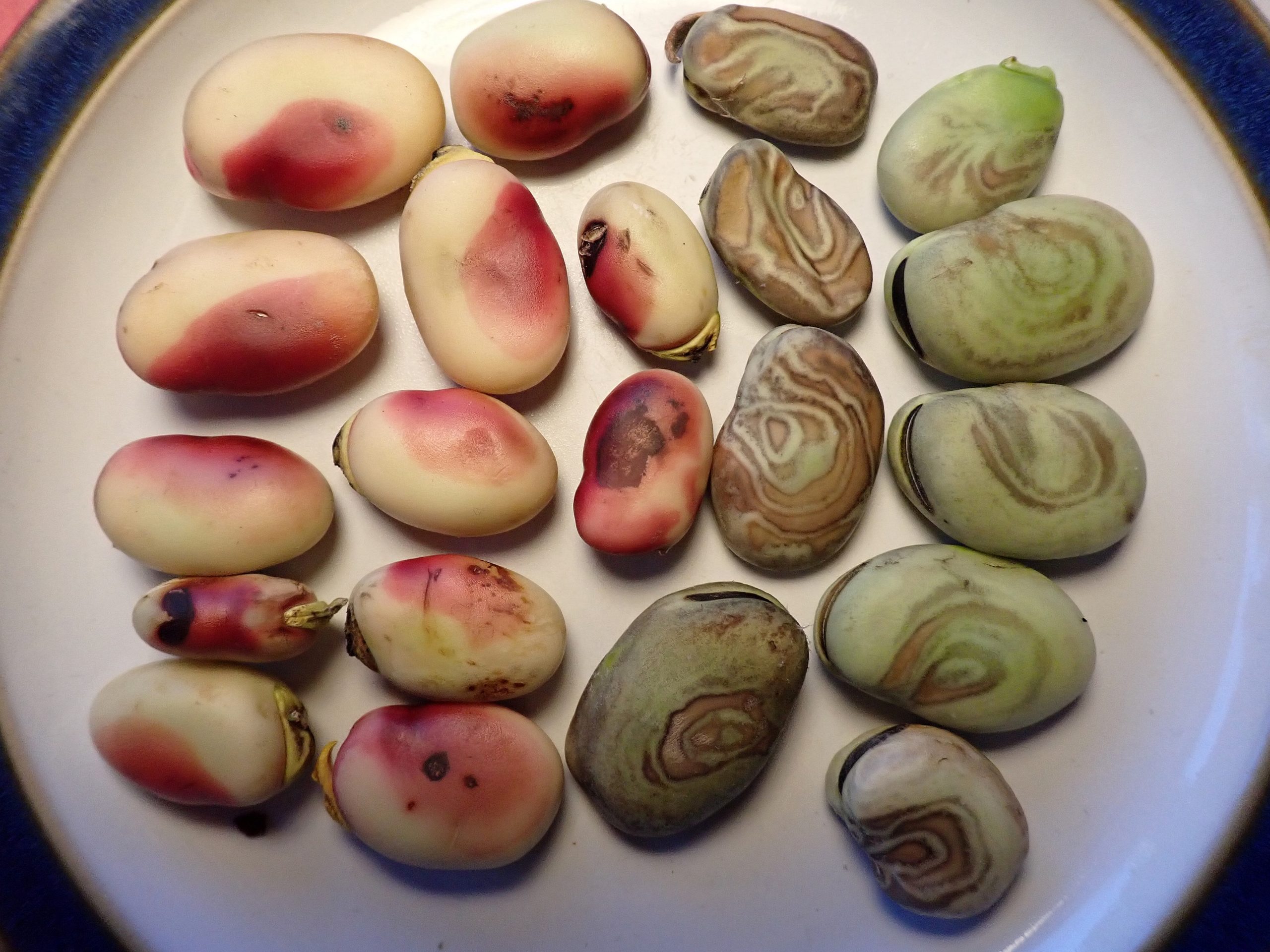

Mini-glut of runner beans
The climate is such here that starting runner beans / blomsterbønner (Phaseolus coccineus) in mid-May they normally aren’t ready to harvest until September and the first frosts in October usually stop their development. Growing seed to maturity is also a challenge in many years, so it’s difficult to select better and earlier varieties more suited to my climate. Early October and we are only just managing to eat all the runner beans. Only once in the almost 40 years I’ve been growing them here was there such a big harvest that I had to preserve them. Not having a freezer, they were salted for later use. These were used in a fish soup this week, sliced using an English runner bean shredder! I grew two varieties this year, the heirloom Painted Lady with bicoloured red and white flowers and red flowered Firestorm with very long stringless beans. Firestorm was a little later. They were transplanted outside at home and in the Americas part of the World Garden at the Væres Venner Community Garden.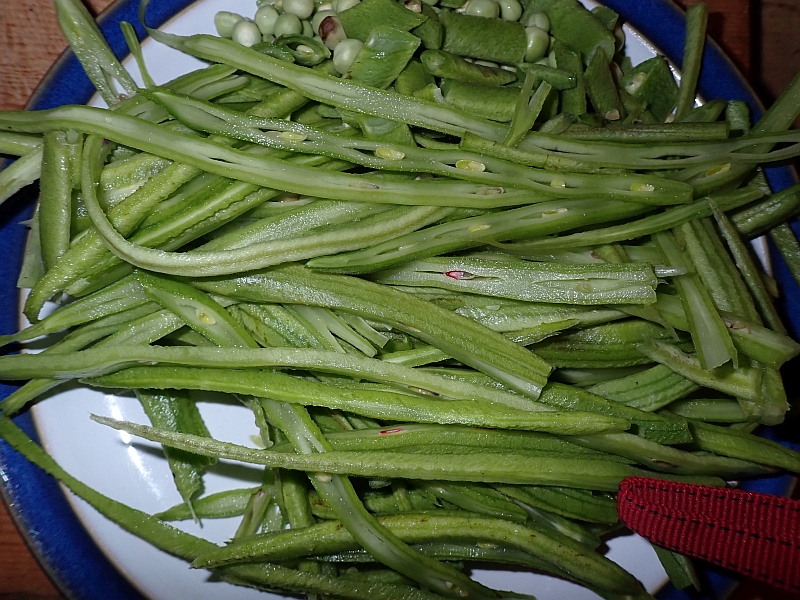


Broad bean (fava) pakora
A little over a year ago we made pakora (Indian fried vegetables) with 65 perennial vegetables to celebrate my 65th birthday (see https://www.edimentals.com/blog/?p=25405)
I made the following comment: “Just wish I’d had broad / fava bean (bondebønne) flour available for the pakoras rather than gram flour (chick peas)…next time I hope :)”
Well, my wish came true and a Swedish guy kindly sent me a packet (sorry, I forget your name, but I think he produces this great slow food product; see http://svensk-fava.se).
(I don’t have the equipment to grind my own broad beans). So here you are. The album below shows the flour, the pakora mixture, the 30 veggies used (list at the bottom) and the final delicious product, a dream come true, something I’ve wanted to make and talked about for years!!
The veggies:
Ostrich fern / strutseving (Matteuccia struthiopteris)
Horseradish / pepperrot (Armoracia rusticana) – blanched
Stinging nettle / brennesle (Urtica dioica)
Topset onion / luftløk (Allium x proliferum)
Common wintercress / vinterkarse (Barbarea vulgaris)
Giant ulleung celery / kjempe ulleung selleri (Dystaenia takesimana)
Allium hymennorhizum
Garlic / hvitløk (Allium sativum)
Himalayan water creeper (Houttuynia cordata)
Oca (Oxalis tuberosa) yellow and red varieties
Ground elder / skvallerkål (Aegopodium podograria)
Patience dock / hagesyre (Rumex patientia)
Gomchwi (Ligularia fischeri)
Common sorrel / engsyre (Rumex acetosa)
Pink-flowered dandelion / roseløvetann (Taraxacum pseudoroseum)
Victory onion / seiersløk (Allium victorialis)
Sweet cicely / spansk kjørvel (Myrrhis odorata)
Welsh onion / pipeløk (Allium fistulosum)
Hogweed / bjørnekjeks (Heracleum spp.)
Parasenecio hastatus
Udo (Aralia cordata) – blanched
Douglas’ onion / Douglas-løk (Allium douglasii)
Bistort / ormerot (Polygonum bistorta)
Ramsons / ramsløk (Allium ursinum)
Pacific onion / Stillehavsløk (Allium validum)
Devil’s club (Oplopanax horridus)
Sea kale / strandkål
Caucasian spinach / stjernemelde (Hablitzia tamnoides)
Great waterleaf (Hydrophyllum appendiculatum)
Moss-leaved dandelion / mosebladet løvetann (Taraxacum sublaciniosum “Delikatess”)
Broad Bean Diversity contributes to Resilience
Broad beans (favas / bondebønner) will easily cross with other varieties that are growing nearby. In order to keep a variety pure, you need to isolate them physically. I’ve chosen a different strategy and manage to maintain a mix of different bean colour and size forms by selecting for these characteristics every autumn. This automatically gives different flower colours too (broad beans are beautiful enough to be included in the edimental category and are also edi-ento-mentals as they are also extremely popular with bumblebees). Here are my selections which I made yesterday after drying the beans for storage. 
Each form will be stored separately and each variety will be planted close to each other in a large block of beans containing many different forms! I think that diversity within a species also contributes to a good harvest with better bean set. I have never had a crop failure using my own home saved mix of beans. I don’t offer the different forms as named varieties, but as a mix or composite “Væres Venner* Mix” through the KVANN / Norwegian Seed Savers yearbook (kvann.no) in February so that others can also select for separate forms!
*Væres Venner is the community garden where most are grown.
See also this post showing the diversity of flowers that produced these beans: https://www.edimentals.com/blog/?p=26183
Edimental Runner Beans
My Dad (95) has always grown Runner Beans, so I have them in my blood. Moving to Norway, I was surprised to find that they were mostly grown as ornamental plants. Indeed, they are called Blomsterbønner (flowering beans) here. Similarly, broad (fava) beans were also rarely grown as a vegetable although both are being more commonly found in veggie gardens today.
However, my cool windy shady hillside garden isn’t ideal for growing runner beans (Phaseolus coccineus), really needing a warm south facing spot for reliable yields. However, being in my blood I have to grow them every year, but some years I wonder why I bother, but still hoping for that bumper yield that we had once many years ago. There were so many that we salted many for winter use.
Well, it looks like this year may finally be that year that my runner beans do crop well and there are already many young beans, perhaps a month earlier than normal, mainly due to the record warm June here when they grew almost as quickly as in Dad’s garden (we compare notes by phone every week!). However, a very cold July turned things around until things started moving again in August.
This year I’m growing four different varieties with different flower colour (we can at least enjoy the flowers!)
1. Celebration  2. Heirloom Painted Lady
2. Heirloom Painted Lady 3. Czar
3. Czar 4. Plain old red Firestorm
4. Plain old red Firestorm 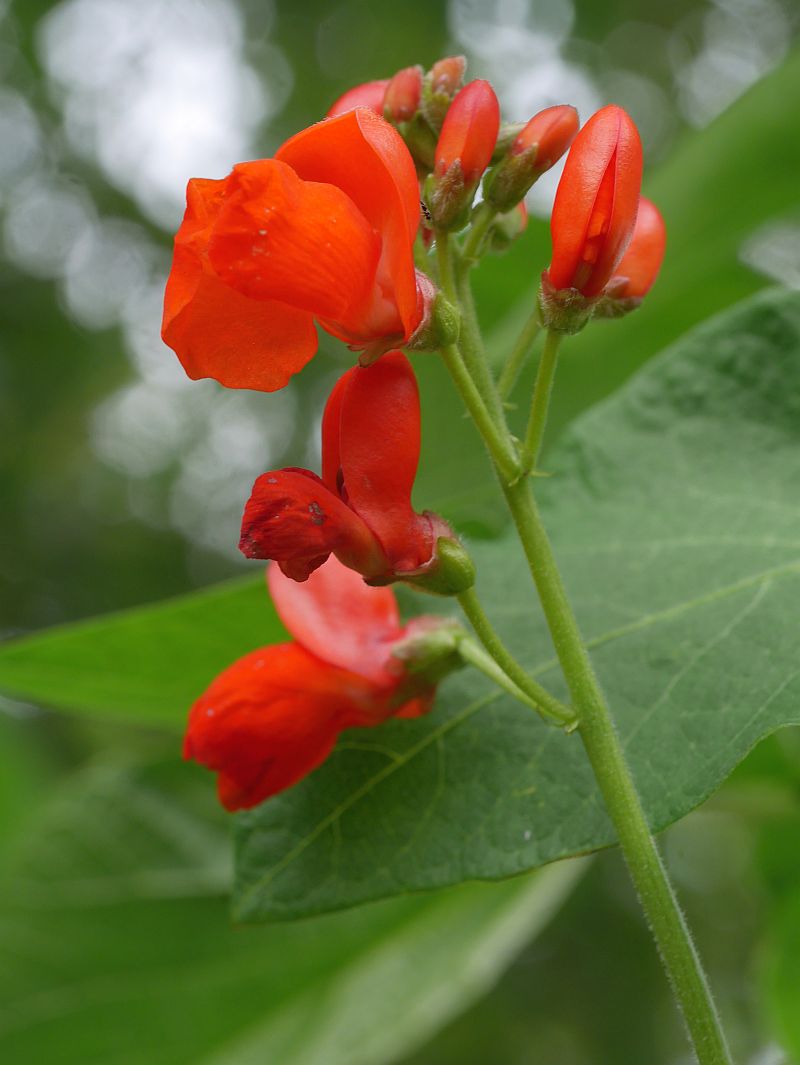
Towards a record early harvest
This summer we’ve experienced a big swing in temperatures from one month to the next…from a record cold May to a record warm June followed by most of July being also record cold. The warmth in June straight after planting my runner beans on 11th (later than normal) resulted in quick growth and by the end of July the earliest variety, two-toned Painted Lady was already in flower, a month earlier than a normal year (if there is such a thing as normal anymore)….so maybe we are heading for a record crop, where runner beans are marginal and almost never give a good sized crop: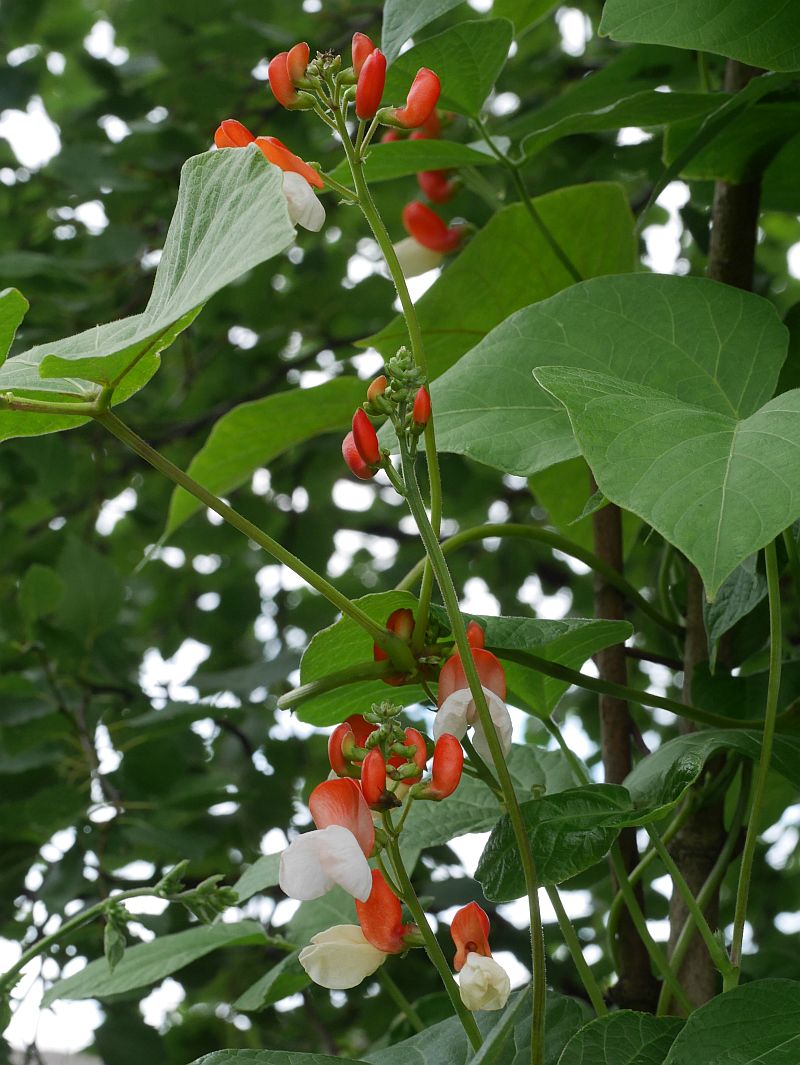
My courgettes (zucchini), planted out on 14th June on my shady composting area (no more than 2 hours of direct sunshine) also started cropping very early at the end of August: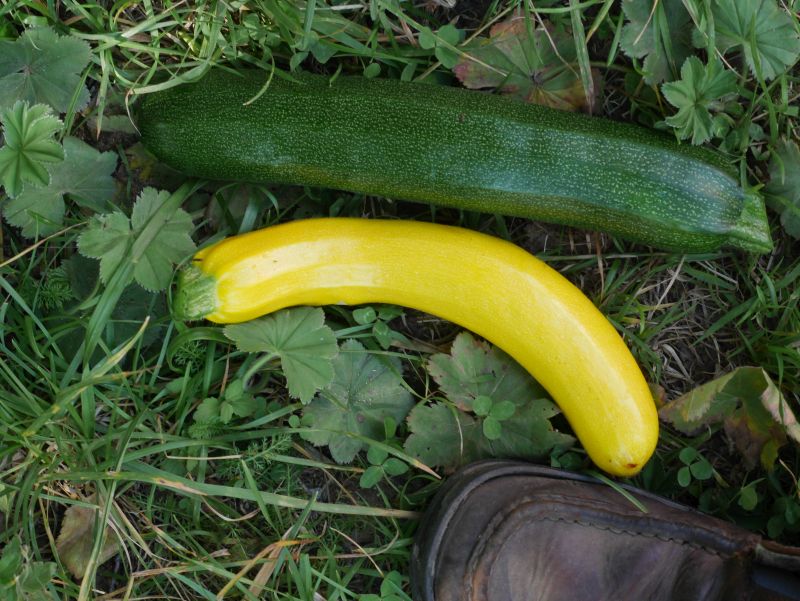
Finally, I was surprised when folk told me last year that their Worcesterberries (a selection of Ribes divaricatum) ripened in July. I’m usually eating mine from the middle of September to the first frosts late in October, but they are also turning colour already:
Broad Bean Mix
Broad beans (favas / bondebønner) will easily cross with other varieties that are growing nearby. In order to keep a variety pure, you need to isolate them physically. I like to have different varieties with different coloured flowers and bean colour in additon to maintaining early yielding varieties such as Express. I’ve found that I can plant different forms close together and if I save separately beans with different colour and bean size and mark for saving plants with particularly nice flower colours, then I can maintain a good mix in the same place. The flower forms below are all growing within a few metres in the Væres Venner community garden. They were grown from the mix of beans saved at the same place in 2018 (first picture). I don’t offer the different forms as named varieties, but as a mix or composite “Væres Venner Mix” so that others can also select for separate forms! Bumble bees were all over the flowers when I was there!
No thanks no dig
Before I go any further, I should say that 2/3 of my cultivated area is almost 100% no dig (perennials is the ultimate no dig) as I grow perennial vegetables, fruit, berries and nuts. I rarely dig in these areas at all as I only plant once and don’t disturb the plants for years. I do still grow annuals on my raised beds…beds which are about 1.2m wide and are never walked on. I add compost on most of the beds each spring and lightly dig over to incorporate the compost and, surprising to most folks, to encourage the weeds to germinate.
There’s one weed in particular that I’m encouraging, Sonchus oleraceus (common sow thistle / haredylle). As I’ve written before (also in the 12 page essay in my book on the sow thistles), this is my favourite summer leafy green vegetable which I eat most days from July to September. It grows quickly and is actually more nutritious than standard greens. It’s also rich in antioxidants and I love it’s slightly bitter taste which goes well with pretty well any dish I might prepare, always mixed with other “vegetables of the day”. We ate it tonight in a pea soup and, yesterday, in a green pasta sauce and the day before that in pizza…
Yesterday, I weeded my second crop broad beans which were growing in a sea of “weeds” and as I weed I selectively allow the sow thistle to grow on between the beans and on the edge of the bed (you can think of this as “WEEDING YOUR WEEDS”). The video and pictures show the broad beans with the young self-seeded sow thistle plants in between. These will grow up quickly in the next 2-3 weeks and I harvest just before they start flowering. This doesn’t interfere with the growth of the broad beans which take much longer to mature to harvest. Later on, the next wave of sow thistle will be allowed to grow on the edges of all the beds where it doesn’t interfere with the main crops, a method used by the Maori of New Zealand which inspired me to introduce Sonchus oleraceus to my garden. Eating your weeds can significantly increase your yield. I must admit that I love weeding, a quiet time in the garden observing wildlife around me…….similarly, I love washing up, both quiet times contemplating. There’s even a name for weeds that are cropped…it’s a cryptocrop. Cryptocropping has been practised by many other peoples around the world.
Any nutrients or soil which might be washed out from my annual beds during periods with naked soil ultimately end up in my forest garden and perennial plantings below, so are not lost! However, there isn’t much loss as my soil is high in humus after over 35 years adding compost!
I’ve tried no dig in the past, but I would need a much bigger area to produce sufficient material for mulching and I also found that in my shady cool garden the soil heated up much too slowly and slugs were also a bigger problem.
In the video, I zoom into the low growing young sow thistle plants between the taller broad bean plants:
Runner bean pizza



